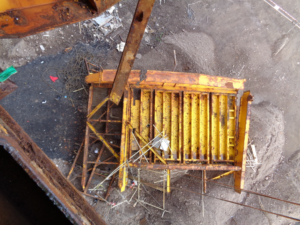Construction company prosecuted after workers fall from height
A construction company has been sentenced following an incident where two bricklayers fell from height during the construction of a parapet wall.
Manchester Magistrates’ Court heard that on 31 October 2019, two employees suffered serious injuries at a property in Over Alderley, Cheshire when the makeshift platform they were working on collapsed. The two men, along with plywood boards and bricks, fell approximately eight feet to the concrete floor below. The first man sustained fractured ribs, severe bruising and a large wound to his leg, the second man sustained severe bruising to his knees.
An investigation by the Health and Safety Executive (HSE) found that H Cumberbirch & Sons Limited did not properly plan the work at height, in that the risk assessment and method statement by failing to consider how the parapet wall would be constructed and how the risk of falling from height would be prevented. The company failed to ensure that there were suitable measures in place for preventing the employees from falling from height and they were left to work out how best to carry out the work with the equipment they had available. The work at height was not adequately supervised to ensure that it was carried out safely.
H Cumberbirch & Son Limited of Fence Avenue in Macclesfield pleaded guilty to breaching Regulation 4(1) of the Work at Height Regulations 2005. The company was fined £36,000 and ordered to pay costs of £2,824.
Speaking after the hearing, HSE inspector Sinead Martin said: “This incident could have been prevented had the company properly planned the work at height and identified and implemented suitable control measures, such as platforms for preventing falls through the joists and scaffolding at the roof edges.
“Falls from height are the number one cause of serious injury and death in the construction industry.”

